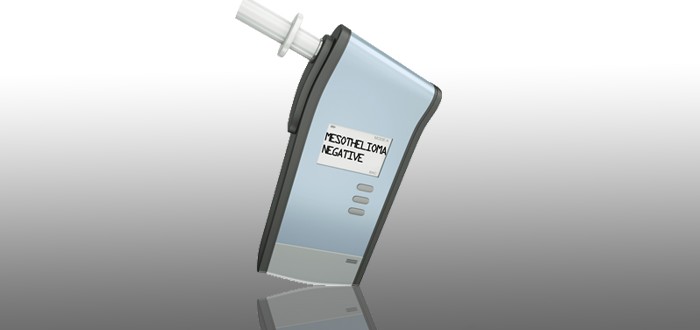The effort to develop a mesothelioma diagnostic tool that detects the cancer by analyzing breath samples is continuing and making impressive strides.
Indeed, at the rate it’s going, the dream of simple, reliable, in-home diagnosis of mesothelioma could become a reality in the next five years or less.
The latest gains on this front come from Japan. There, researchers have unveiled what appears to be the most sensitive smell-sensor yet developed.
The smell-sensor would form the core of every mesothelioma “breathalyzer” unit made and sold. But before the sensor can be of value, it needs a comprehensive database of cancer odors, researchers say.
That’s coming, they say. They know it is coming because they are building it. This database is crucial because each type of cancer has its own unique smell. The researchers estimate it will be ready by 2022 at the latest.
Mesothelioma Breathalyzer Won’t Be Expensive
The key component of the sensor itself is a microchip. Measuring only a few millimeters square, the microchip the Japanese researchers are developing is sophisticated and very sensitive to cancer odors.
And it is surprisingly inexpensive. The cost to make one is only about $2 – $3. That means the mesothelioma breathalyzer you eventually are able to buy won’t be expensive.
The low price will be good for helping ensure that mesothelioma breathalyzers end up in the hands of every person who at some point in the past was exposed to asbestos.
The value of having one of these devices is that it will permit fast, easy and early detection of mesothelioma. That’s important because you can get a huge jump on treating mesothelioma if you detect it very soon after onset.
Ordinarily, many weeks or even months go by before mesothelioma is conclusively diagnosed. By then it’s usually well advanced, which makes fighting it a very difficult proposition.
If you could attack it while the cancer is still in its infancy, your odds of beating it back and surviving a long time would be dramatically better.
Sensor Research Ongoing
Spearheading the research into the new sensor has been Japan’s National Institute for Materials Science. Its partners in the endeavor include Kyocera Corp., NEC Corp., Sumitomo Seika Chemicals Co., Osaka University and a precision equipment maker in Switzerland.
The Japanese research builds on advances made elsewhere in the world. In February 2015, for example, we told you about smell-sensor research at Cleveland Clinic.
We also told you about a European-funded consortium of science and health centers, led by Technion-Israel Institute of Technology. Participating in that endeavor is medical technology giant Siemens and several university-based research centers across Europe.
As envisioned by all these various researchers, the ultimate diagnostic tool employing cancer scent-detection will take input from a mouthpiece you breathe into and analyze it via your cell phone.
Your cell phone won’t actually perform the analysis. That will be handled by a facility that your cell phone calls for you.
The sensor will convert into digital information the scent picked up from your breath. This data will then be fed to your phone. Your phone will pass it to the facility performing the analysis.
In a matter of seconds, the facility will relay back to your phone plain-language information about what was detected in your breath. Depending on the type of phone you use, the information might be displayed back to you as text, a graphic or both.
You’ll know immediately whether or not you have mesothelioma, or some other disease.


